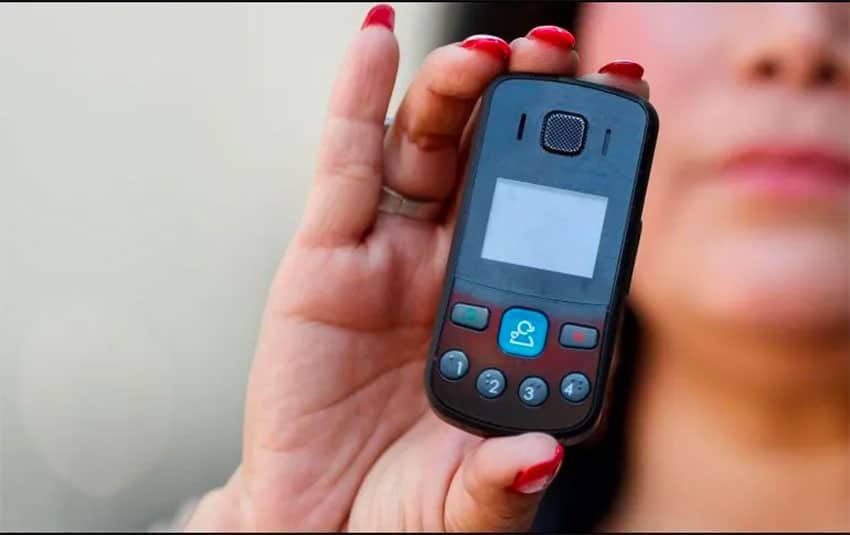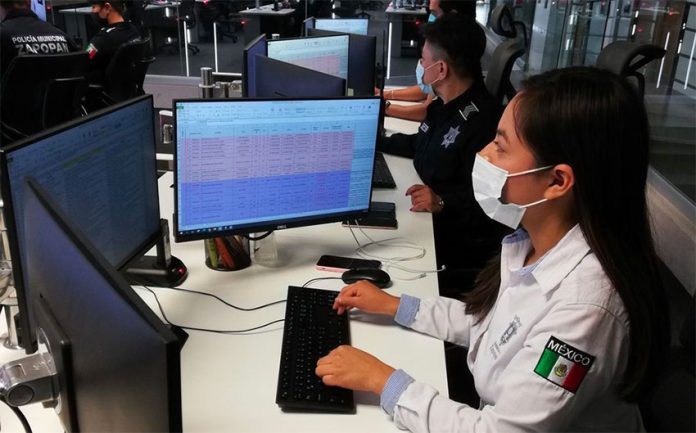Panic buttons issued in Zapopan, Jalisco, to more than 500 women considered at medium and high risk of becoming victims of femicide are saving lives, according to one woman who owes her life to the electronic devices.
Authorities in Zapopan, a municipality that is part of the metropolitan area of Guadalajara, have distributed 552 “pulse of life” panic buttons to women who have been victims of physical violence perpetrated by their former partners.
One of the participants in the program is Lorena (not her real name), a 26-year-old woman with an abusive, estranged husband.
She told the newspaper Milenio that her “pulse of life” saved her life when her husband – who had previously attacked her on numerous occasions –broke into her home. He broke into the gated community where she lives and attempted to enter her home with a house key still in his possession.
But the lock had been changed and he was unable to get in, she explained. Enraged, the man broke a window to gain access. Lorena knew immediately that her life was in danger and locked herself in the bathroom and contacted the police using the panic button hanging around her neck.

Paulette Colorado, an employee in the municipal police C5 command center, tried to calm Lorena down and informed her that the nearest police car had been dispatched to her home. As she waited for the police to arrive, her husband managed to gain access to the bathroom, where he came face to face with his terrified wife.
Lorena told Milenio that when she saw him in front of her the only thing that she could think to do was to hold up her panic button and shout, “It’s the police!”
Immediately after, Colorado advised Lorena via her panic button that the C5 control center was listening to what was happening and that the police would soon arrive.
“That gave him a tremendous surprise,” Lorena said, adding that her husband took a backward step and she was able to lock herself in the bathroom again. The police arrived a short time later and apprehended the man after a short chase.
“When they were arresting him, he had the audacity to fight with the police, the aggression continued,” Lorena said.
“He came with other intentions; if it hadn’t been for the pulse of life, you and I wouldn’t be here talking, that’s the reality. … “I’m a survivor thanks to the pulse of life.”
The panic buttons come on a necklace-like chain and are equipped with technology that allows communication with the Zapopan C5 center and transmits the wearer’s location. A digital map in the command center shows the location in real time of all 552 women who have been issued with panic buttons since the 4-million-peso (US $191,000) security program began in 2019.
Juan Carlos Contreras, the deputy director of the command center, told Milenio that the women don’t need to identify themselves when they use their buttons because as soon as one is activated the carrier’s name appears on a screen.
“They don’t need to say, ‘My name’s Lupita and I have a problem,’” he said. “With the simple act of pressing the button … we know who we’re interacting with.”
Carlos Franco, head of the Zapopan police department responsible for preventing and investigating domestic and gender violence, said proudly that there have no murders of women issued with the buttons.
As a result of the success in Zapopan, police forces in some other Jalisco municipalities, including Guadalajara, Tlaquepaque and Puerto Vallarta, have introduced similar programs.
Asked how the program in Zapopan could be improved, Lorena said she was happy with the way it is operating now but would like to see it expand.
“The only thing I would like is for there to be more pulse of life panic buttons, for the authorities to support the program economically so that there are a lot more” because every one can save a woman’s life, she said.
With an average of about 10 murders of females every day, Mexico is one of the most dangerous countries in the world for women.
Source: Milenio (sp)
